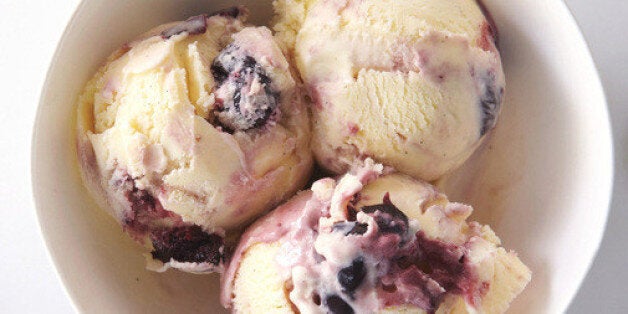
by Tommy Werner, Epicurious
You've picked up the finest pint at the store. Maybe you've even made your own ice cream. You've sampled a little (or maybe a lot) before shutting it into the freezer. But when an ice cream craving strikes again, what will you find in the container?
Winter, in the form of freezer burn, has arrived. It's shattered what was once delightful about ice cream. Chocolate ice. Glaciers of vanilla. Blizzards of butter pecan. We feel your pain.
Short of eating the entire carton in one sitting, here's how to preserve your favorite ice cream.
FREEZER BURN: ICE CREAM'S WORST NIGHTMAREWhy does freezer burn happen? When food is exposed to air in a freezer (like in a non-airtight container), the cold temperature reacts with the oxygen, which dehydrates the food at the surface.
We checked in with Cary Frye, of the International Dairy Foods Association, who specializes in ice cream (um, dream job?). She broke things down for us. "If ice cream is left out and refrozen, you're going to get larger crystals, which are going to feel coarse, icy, and even colder on your tongue," Frye says, "The second quality defect with ice cream is the evaporation of water at ice cream's surface level, and that forms additional ice crystals that you can see."
When ice cream is commercially frozen, a manufacturer's goal is to freeze the ice cream with small and uniform ice crystals. As ice cream thaws and refreezes, these ice crystals can get bigger and less uniform--that's the patches of ice you see in some spots. While freezer burn won't hurt, it certainly isn't fun to eat, as anyone who tries to burnt ice cream will try to tell you while chomping on ice particles.
DON'T LET FREEZER BURN HAPPEN TO GOOD ICE CREAMTo keep your ice cream burn-free, you want to minimize oxygen exposure. How? We didn't want to split hairs too much, but it's Frye's job to split hairs and recommend the best ways to keep ice cream. The former food technologist and current ice cream expert gave us her own hacks for protecting ice cream.
Frye places a piece of plastic wrap directly on top of the ice cream before replacing the lid. By minimizing permeable surfaces, you're making less places for the ice cream to be exposed to air. This won't make your ice cream invincible, but it's enough to keep it fresh for a little bit longer.
Ice cream placement within the freezer also can make or break ice cream. The freezer, much like an oven, has a temperature control, but some spots are warmer than others. Keeping the temperature stable prevents fluctuations in the ice cream that build larger lumps of ice. Though pint containers fit almost too perfectly, don't keep ice creams in the door. The door experiences the most temperature fluctuation from opening and closing. Our favorite place to store? Deep in the back, where there's less exposure to the outside air.
More from Epicurious:20 Must-Try Ways to Pair Items You Already Have In Your Pantry